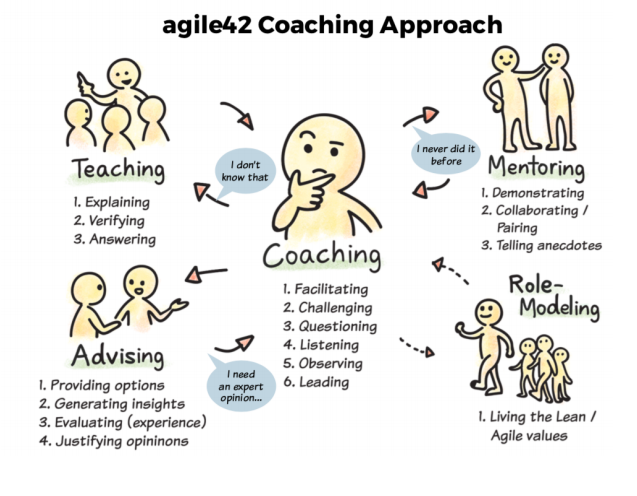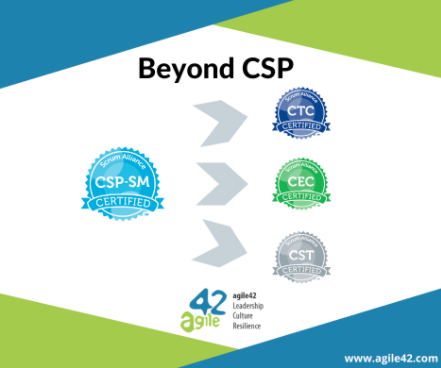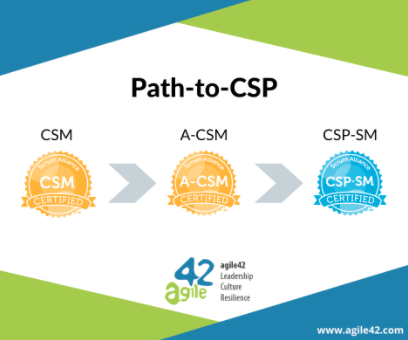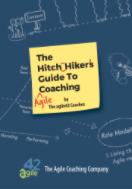Growing as a Scrum Master and Beyond
/by Sofia SvanbäckLast Wednesday, the 11th of November, we ran our webinar "Growing as a Scrum Master and Beyond"! This topic clearly resonated with many, as we set a new record number of participants. We spotted familiar names who have been following us over the years, and many new names we hope to see again. It makes us happy to see our webinar network growing!
We had the great honour of welcoming two guests on this webinar, Jelena Vucinic and Bob Stomp, who joined our CSP-SM training this fall. Together with agile42 trainers & coaches, Giuseppe De Simone and Niels Verdonk, we hope they provided you with the content you were after.
As the coaches mentioned early on in the webinar, being a Scrum Master in a company is much more than just attending a 2-day training to get certified. Whilst your role is to primarily coach the team, it is also to teach, give advice, be a mentor and role model of the Agile and Scrum values and principles. This is not always an easy task. The knowledge and skills you need as a Scrum Master will grow through education, perhaps some additional coaching and most of all the experience and support of other Scrum Masters in your organization and network.

As Jelena mentioned during the webinar, a typical day for a Scrum Master is not only to facilitate Scrum meetings, however a multitude of other undertakings. You observe the team, prepare for meetings, follow-up action points from meetings, handle impediments, have 1-on-1 meetings with the team members and stakeholders when needed and think about new ways in which you can help your team.
The webinar attendees were particularly interested in the ways you can grow as a Scrum Master, for which there are various paths. You can of course take the training provided on the Scrum Master growth path as visualised in the diagram below. Each training goes deeper into the content of the Scrum Master, and you will gain valuable new skills and learnings to add to your toolbox. The below diagram shows the steps to become a CSP-SM:
We recommended reading The Hitchhikers Guide to Agile Coaching and checking out the post on 5 books we believe every Scrum Master should read.
Other training we offer is the Advanced Team Coaching Course which we recommend for those who already have CSM certification. There is also the ICAgile Team Facilitation Certification to support you as a Scrum Master. Furthermore you could consider coaching from one of our Agile coaches, for example, to grow you or your team of Scrum Masters.
Many of you listening asked us about the whole CSP path, how to grow skills and mindset as well as next steps after CSP-SM certification, and we feel that depends on what skills you wish to deepen. Below you can see examples of next steps, and our Mentoring programme can assist you on these paths. Mentoring is a long term commitment both from your side and the Mentors side, and this is a great opportunity to meet like-minded people, and to grow and learn together.

If you would like to explore next steps on your individual growth path and/or like to enquire about our Mentoring programme after the CSP-SM, please get in touch with us and we would be happy to help.
Our upcoming trainings can be found here - take the next step on your journey with us!
The recording is available online. Feel free to watch it again and share with your network. It is also available on YouTube.
Below you will find the slides, with some further content. Please also feel free to share the slides around.
Connect with us on social media, to stay updated with blogs, webinars, training and other events which support your learning journey :)
Have a great weekend, and don't forget to check out post and upcoming webinars!





